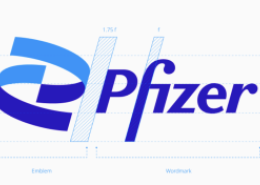FDA Issues Complete Response Letter For Pfizer’s Tafamidis Meglumine New Drug Application
(BUSINESS WIRE)--Pfizer Inc. (NYSE: PFE) announced today that it has received a Complete Response Letter from the U.S. Food and Drug Administration (FDA) on its New Drug Application (NDA) for tafamidis meglumine. The Agency is requesting the completion of a second efficacy study to establish substantial evidence of effectiveness prior to an approval. The Agency has also asked for additional information on the data within the current tafamidis NDA. Pfizer will work with the FDA to address the content of the letter. Tafamidis is a novel, investigational medication for the treatment of Transthyretin Familial Amyloid Polyneuropathy (TTR-FAP) in adult patients with symptomatic polyneuropathy to delay neurologic impairment.
The European Commission (EC) approved VYNDAQEL® (tafamidis) for the treatment of TTR-FAP in adult patients with stage 1 symptomatic polyneuropathy on November 16, 2011. In the U.S., there is no FDA-approved treatment for TTR-FAP.
“TTR-FAP is a relentless and debilitating disease. We understand the urgent need within the patient community and stand firmly behind this innovative medicine,” said Dr. Yvonne Greenstreet, senior vice president and head of Medicines Development Group for Pfizer's Specialty Care Business Unit. “It is our intention to request a meeting as soon as possible with the Agency in order to discuss a potential path forward.”
TTR-FAP is a rare, progressive and fatal neurodegenerative disease that affects approximately 8,000 patients worldwide.1,2,3 Because it is a hereditarydisease, family members may also be at risk for developing the disease.4 In the U.S., a non-endemic region, the incidence is estimated to be about 1 in 100,000, impacting approximately 3,000 people.5,6
About Transthyretin Familial Amyloid Polyneuropathy (TTR-FAP)
Transthyretin Familial Amyloid Polyneuropathy (TTR-FAP) is a rare and fatal neurodegenerative disease, primarily caused by a genetic mutation of the transthyretin (TTR) gene.1,2 In TTR-FAP, transthyretin destabilization leads to misfolded proteins that form amyloid fibrils in the peripheral and autonomic nerves, as well as other organs including the GI tract, kidneys and heart.7,8 Patients with TTR-FAP experience significantly diminished quality of life due to symptoms including polyneuropathy characterized by sensory loss, pain and weakness in the lower limbs; as well as severe impairment of the autonomic nervous system commonly manifesting as erectile dysfunction, alternating diarrhea and constipation, unintentional weight loss, orthostatic hypotension, urinary incontinence, urinary retention and delayed gastric emptying.4,7,8 As the disease progresses, patients often lose the ability to walk, needing wheelchair assistance, and eventually become bedridden and unable to care for themselves.9 TTR-FAP typically occurs during active adult years with onset as early as the 30s, followed by disease progression that may reach the terminal stage in approximately 10 years on average.8,10
About Tafamidis
Tafamidis is a novel, selective stabilizer of the transthyretin protein approved in November 2011 by the European Commission (the trade name in the European Union and proposed trade name in the U.S. is VYNDAQEL®). It is indicated in the European Union for the treatment of TTR amyloidosis in adult patients with stage 1 symptomatic polyneuropathy to delay peripheral neurologic impairment.
About Pfizer's Specialty Care Business
Pfizer's Specialty Care Business Unit is the world's largest specialty pharmaceuticals business, with a commitment to the eradication, remission, and relief of serious diseases. Pfizer's Specialty Care Business Unit brings together the best scientific minds to challenge the most feared diseases of our time, and we seek solutions to prevent and relieve suffering of patients with serious diseases, regardless of prevalence. Pfizer is an established global leader in rare diseases, offering marketed products treating 18 orphan indications in the U.S. to address the unique needs of small patient populations affected by uncommon and often life-threatening conditions. We are on the front lines of discovering innovative medicines and delivering hope through continued focus on research, development and commercialization of orphan medicines.
Pfizer Inc: Working together for a healthier world™
At Pfizer, we apply science and our global resources to improve health and well-being at every stage of life. We strive to set the standard for quality, safety and value in the discovery, development and manufacturing of medicines for people and animals. Our diversified global health care portfolio includes human and animal biologic and small molecule medicines and vaccines, as well as nutritional products and many of the world's best-known consumer products. Every day, Pfizer colleagues work across developed and emerging markets to advance wellness, prevention, treatments and cures that challenge the most feared diseases of our time. Consistent with our responsibility as the world's leading biopharmaceutical company, we also collaborate with health care providers, governments and local communities to support and expand access to reliable, affordable health care around the world. For more than 150 years, Pfizer has worked to make a difference for all who rely on us. To learn more about our commitments, please visit us at www.pfizer.com.
DISCLOSURE NOTICE: The information contained in this release is as of June 18, 2012. Pfizer assumes no obligation to update forward-looking statements contained in this release as the result of new information or future events or developments.
This release contains forward-looking information that involves substantial risks and uncertainties about a product in development, tafamidis, including its potential benefits, that is under review by the FDA. Such risks and uncertainties include, among other things, the uncertainties inherent in research and development; the Company’s ability to address the comments in the Complete Response Letter to the satisfaction of the FDA; whether and when the FDA and regulatory authorities in other jurisdictions in which applications may be filed will approve applications for tafamidis as well as their decisions regarding labeling and other matters that could affect its availability or commercial potential; and competitive developments.
A further description of risks and uncertainties can be found in Pfizer’s Annual Report on Form 10-K for the fiscal year ended December 31, 2011 and in its reports on Form 10-Q and Form 8-K.
1. | Dattilo PB. Familial (ATTR) amyloidosis misdiagnosed as primary (AL) variant: a case report. Cases J. 2009;2:9295-9298. | |
2. | Ando Y, Nakamura M, Araki S. Transthyretin-related familial amyloidotic polyneuropathy. Arch Neurol. 2005;62:1057-1062. | |
3. | Data on file. Pfizer Inc, New York, NY. | |
4. | Sekijima Y, Yoshida K, Tokuda T, Ikeda S. Familial transthyretin amyloidosis. In: Pagon RA, Bird TD, Dolan CR, Stephens K, eds. GeneReviews [Internet]. Seattle WA: University of Washington, Seattle; 1993-2009. http://www.ncbi.nlm.nih.gov/ books/NBK1194/. Accessed January 31, 2011. | |
5. | Benson MD. Amyloidosis. Encyclopedia of Life Sciences. Available at: http://onlinelibrary.wiley.com/doi/10.1038/npg.els.0002146/pdf. Published April 2001. | |
6. | US Census Bureau. Annual Estimates of the Resident Population by Sex and Five-Year Age Groups for the United States: April 1, 2000 to July 1, 2009. Suitland, MD: US Census Bureau. | |
7. | Benson MD, Kincaid JC. The molecular biology and clinical features of amyloid neuropathy. Muscle Nerve. 2007;36:411-423. | |
8. | Hou X, Aguilar M-I, Small DH. Transthyretin and familial amyloidotic polyneuropathy: recent progress in understanding the molecular mechanism of neurodegeneration. FEBS J. 2007;274:1637-1650. | |
9. | Coutinho P, da Silva AM, Lima JL, Barbosa AR. Forty years of experience with type 1 amyloid neuropathy: review of 483 cases. In: Glenner GG, e Costa PP, de Freitas AF, eds. Amyloid and Amyloidosis. Amsterdam: Excerpta Medica; 1980:88-98. | |
10. | Plante -Bordeneuve V, Ferreira A, Lalu T, et al. Diagnostic pitfalls in sporadic transthyretin familial amyloid polyneuropathy (TTR-FAP). Neurology. 2007;69:693–698. |
Pfizer Inc.
Media:
Victoria Davis, 484-865-5194
[email protected]
or
Investor Relations:
Suzanne Harnett, 212-733-8009
[email protected]








